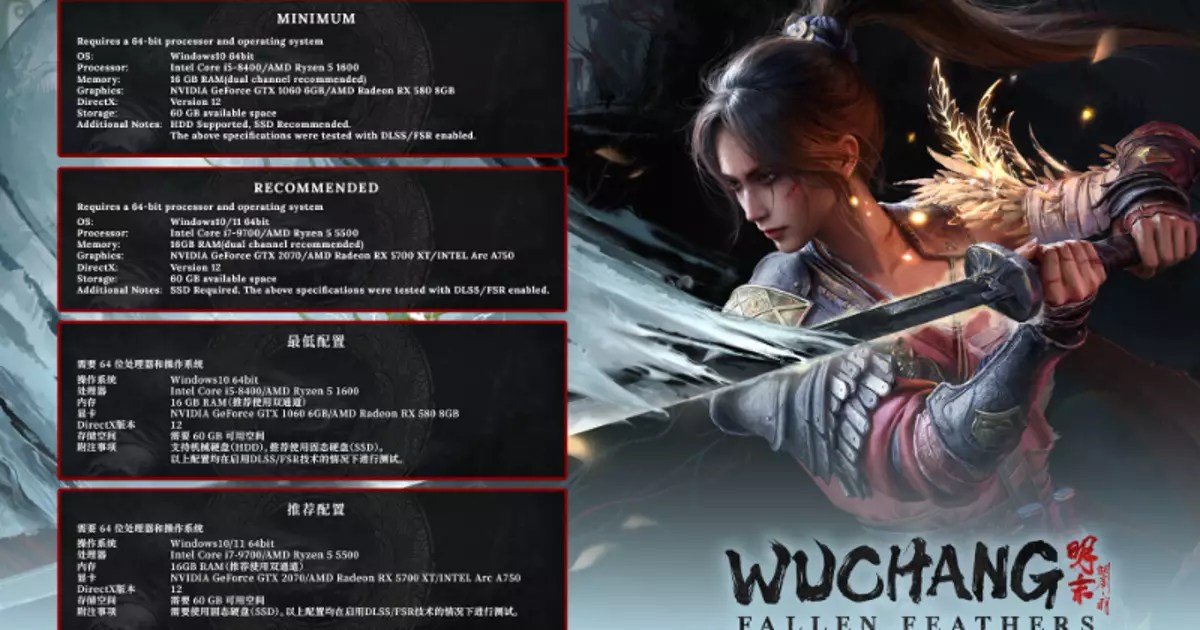Wuchang: Fallen Feathers emerges as a compelling addition to the action-RPG genre, blending traditional Chinese historical elements with dark fantastical themes. Unlike the typical fantasy landscapes, this game immerses players in the intricacies of the Ming dynasty era, a period rich with cultural depth and political intrigue. The game’s narrative revolves around a mysterious amnesiac heroine, a pirate swordswoman, who must navigate a world ravaged by the “Feathering” plague—a uniquely grotesque twist that transforms citizens into avian-human hybrids. This setting immediately sets Wuchang apart, not merely as another combat-based game but as an ambitious narrative experience that explores identity, memory, and societal collapse. The game’s visuals have reportedly seen improvements since its early reveal, fostering a more authentic and less overtly stylized representation of the Shu realm, enhancing player immersion in this feathered nightmare.
Gameplay Mechanics That Fight for Your Attention
Wuchang deftly combines traditional action-RPG combat with mechanics tailored for a modern audience hungry for depth and customization. Scavenging in a plague-ridden world for “Red Mercury” hints at a gritty, resource-management component—where gathering and crafting are essential to survival. Weapon enchantments add an additional layer of strategic depth, allowing players to tailor their fighting style while escalating violence against bird monsters and mutated foes. The storyline’s emphasis on choices and multiple endings indicates a nuanced narrative architecture, encouraging replayability and personal investment. As players piece together the protagonist’s lost memories, they will influence the fate of Shu, adding to the game’s allure as a meaningful story-driven experience.
Technical Demands and Hardware Expectations
System requirements reveal both the accessibility and the potential visual fidelity of Wuchang. The minimum specs—an Intel Core i5-8400 and a GTX 1060—are relatively modest for a modern AAA-like RPG, suggesting that developers aim to reach a broad audience without sacrificing too much on visual quality. However, to experience the game in its full glory, the recommended specs demand at least a high-end RTX 2070 and an SSD, indicating that Wuchang leans heavily on advanced graphics and fast load times to immerse players fully in its darkly atmospheric setting. The inclusion of DLSS 4 support is noteworthy, promising enhanced performance through NVIDIA’s AI-powered upscaling technology, ensuring smoother frame rates and sharper visuals on compatible hardware. This indicates that the developers are keen on delivering a polished, visually striking experience that leverages the latest technology.
A Critical Reflection on the Game’s Potential Impact
Wuchang’s success hinges on its ability to deliver on both its visual promise and its narrative depth. Its unique setting, combined with fast-paced combat and moral choices, could position it as a standout for fans of Soulslikes and action-RPG lovers yearning for something culturally distinctive. The game’s emphasis on its multiple endings and secret hunting speaks to a design philosophy that values player agency and replayability rather than just rote combat. Still, one must be cautious; technical requirements and visual ambitions may alienate users with less powerful hardware, curbing accessibility. But for those equipped to run it, Wuchang offers a tantalizing blend of storytelling, strategic combat, and atmospheric design that could elevate the genre.
Wuchang’s release mars not only a promising game but also signifies a broader cultural leap, showcasing Chinese mythology and history within the context of a dark fantasy setting. It challenges the Western-centric notions of what an action-RPG can be, pushing for more diverse narratives and visual styles in the gaming industry. If the developers maintain their focus on storytelling, gameplay, and technical polish, Wuchang might well carve its own niche—becoming a game that not only entertains but also enriches the cultural tapestry of contemporary gaming.


Leave a Reply